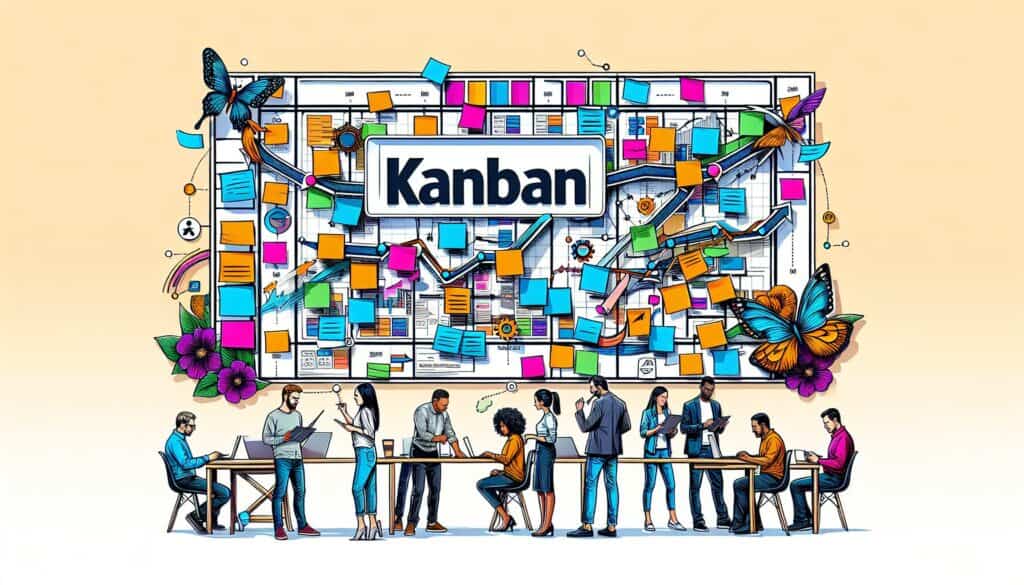A visual workflow management method designed to help teams visualize their work, limit work-in-progress (WIP), and maximize efficiency (or flow).
- 方法: 工程, 人体工程学
看板

看板
- 敏捷方法论, 持续改进, 看板, 精益制造, 流程改进, 项目管理, 团队合作, 价值流映射
目标
如何使用
- Work items are represented by cards on a 看板 board, which is divided into columns representing stages of the workflow. Teams pull work from one stage to the next as capacity allows, with explicit WIP limits for each stage to prevent bottlenecks.
优点
- Improves workflow visibility and transparency; Helps identify bottlenecks quickly; Flexible and adaptable to various processes; Promotes continuous flow and reduces lead times by limiting WIP.
缺点
- Does not inherently provide time estimations for tasks; Can be less effective if WIP limits are not respected or if tasks are not broken down appropriately; Requires team discipline and commitment to the system.
类别
- 构思, 精益西格玛, 制造业, 产品设计, 项目管理
最适合:
- Managing and improving workflows, especially for teams with a continuous flow of tasks or in operational environments.
Kanban methodology is effectively utilized across a wide range of industries such as software development, manufacturing, healthcare, and logistics, where managing continuous workflows is imperative. For example, in software teams, Kanban boards can visualize features being developed, tested, and deployed, which allows for real-time adjustments based on the team’s workload and priorities. In operational environments, such as factories, Kanban can facilitate inventory management, ensuring that supplies move smoothly through production lines by aligning supply with demand. This methodology can be implemented during various project phases, from initial conception to ongoing maintenance, and is beneficial for cross-functional teams including designers, engineers, and product managers who need to collaborate effectively. The initiation of a Kanban system often involves team leaders or project managers who establish the framework, while all team members participate in updating and managing the board, ensuring that work remains visible and that responsibilities are shared. With defined Work In Progress (WIP) limits, the Kanban approach encourages teams to concentrate on completing tasks before taking on new ones, mitigating the risk of overload and enhancing focus on delivering quality outcomes. Regular reviews can identify bottlenecks, allowing for timely interventions that drive process improvement, making Kanban a versatile tool for enhancing team productivity and operational efficiency.
该方法的关键步骤
- Visualize the workflow by creating a Kanban board with columns for each stage of the process.
- Define work item types and assign tasks to cards that represent these items.
- Set explicit Work In Progress (WIP) limits for each column to control flow and prevent bottlenecks.
- Implement a pull system where team members pull tasks from the previous column as capacity allows.
- Monitor and manage flow by adjusting WIP limits and making process improvements based on observed performance.
- Conduct regular reviews and stand-up meetings to discuss progress, challenges, and potential adjustments.
- Create feedback loops to enable continuous improvement, adapting the board and workflows as necessary.
专业提示
- Regularly conduct retrospective reviews to refine WIP limits and ensure they reflect actual team capacity and workflow efficiency.
- Utilize metrics such as cycle time and lead time to make data-driven adjustments to the Kanban board and improve throughput.
- Implement "swimlanes" on the Kanban board to categorize work items by type, priority, or team role, enhancing visibility and focus on critical tasks.
历史背景
1930
1940
1950
1950
1958
1960
1960
1930
1940
1949
1950
1950
1960
1960
1960
(如果日期不详或不相关,例如 "流体力学",则对其显著出现的时间作了四舍五入的估计)。















相关文章
肌肉骨骼不适调查表
多变量测试(MVT)
多元回归分析
动作捕捉系统
MoSCoW 方法
情绪中值测试